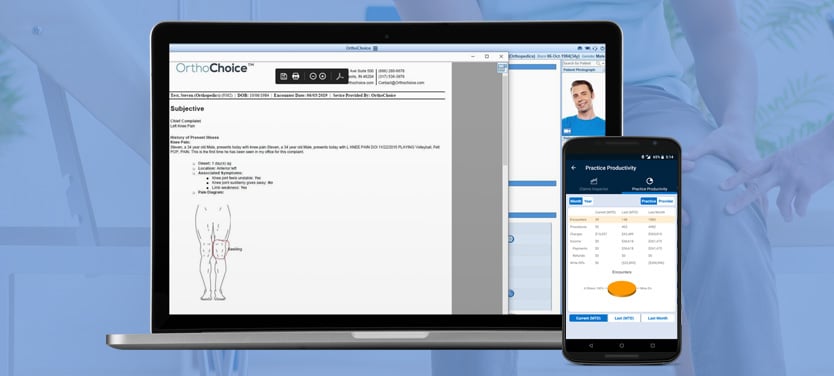
7 Features Your Orthopaedic EHR Should Have
Not every Orthopaedic EHR is the same. Ortho providers need a specialty-specific Electr...
February 18, 2020
At the end of the day, improving patient outcomes through quality patient care is every physician’s number one priority. The orthopaedic software that your practice uses greatly affects the level of quality that a physician is able to deliver. Whether it is an Electronic Health Record, Medical Billing Software, or your Practice Management software, the software your orthopaedic practice is using daily can impact patient outcomes. The right orthopaedic software will improve outcomes and help your patients stay on the right track.
How the Right Orthopaedic Software Can Help
1) Patients Stay Connected
Orthopaedic software can offer your patients the chance to be more connected to their physicians and to their medical care, overall. Integrated technology enables patients to access important health data, helping them understand how their health choices will impact their lives. Your orthopaedic software can show your patients their most recent tests/labs. They can review and understand their treatment plan. Or they can view a complete list of their medications. The right technology gives your patients the tools they need to stay connected to your practice while educating them on the different areas of their care. With this information available, patients can start to make decisions that impact their health in a positive way.
2) Foster Patient Engagement
Patient engagement is the key to improving outcomes as there is a direct correlation between how involved a patient is in their medical care and how positive their outcome is. Patients who are active participants in care planning, annual care, and follow-up care tend to see better results in their health. Ignorance regarding one’s health leads to negative results as they are not aware of how their choices are impacting their personal life. With the right orthopaedic software, orthopaedic specialists can foster an environment to help grow patient engagement and improve patient outcomes. Tools like a quality patient portal in your orthopaedic software can encourage patients to schedule more appointments, reach out about any concerns they are having, or receive reminders regarding regular care or follow-up appointments.
3) Open Up Communication
An open line of communication between a patient and their orthopaedic physician is sometimes difficult to cultivate. Orthopaedic software can help develop better levels of communication and improve the relationship between patient and physician. This is accomplished through an Electronic Health Record by giving patients an outlet to ask questions even when they’re not in for a visit. Your orthopaedic software can also open up communication between appointments by sending your patients emails about what is new at your practice or new programs they might be eligible for. Regardless of the type of communication, increased discussion between appointments can lead to more patient accountability and better outcomes.
4) Physician Access
The right orthopaedic software can also offer physicians access to robust patient data that was previously difficult to obtain. Interoperability makes it possible for ortho physicians to request PHI from other providers and access it in moments. A customizable dashboard makes it possible for providers to access data in a way that makes sense to their unique workflow while helping them make an informed clinical decision. Access to visit alternatives like Telehealth make empowers physicians to visit with more patients in a day without sacrificing their time. With the right orthopaedic technology, your practice will not only improve outcomes among your patients, but also among your physicians. The right software can reduce physician burnout by helping them return their attention to the patient and less time on their computers.
To learn more about how the right orthopaedic software can help your practice, click here.